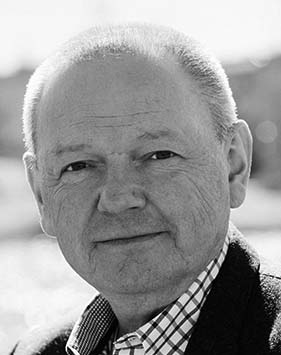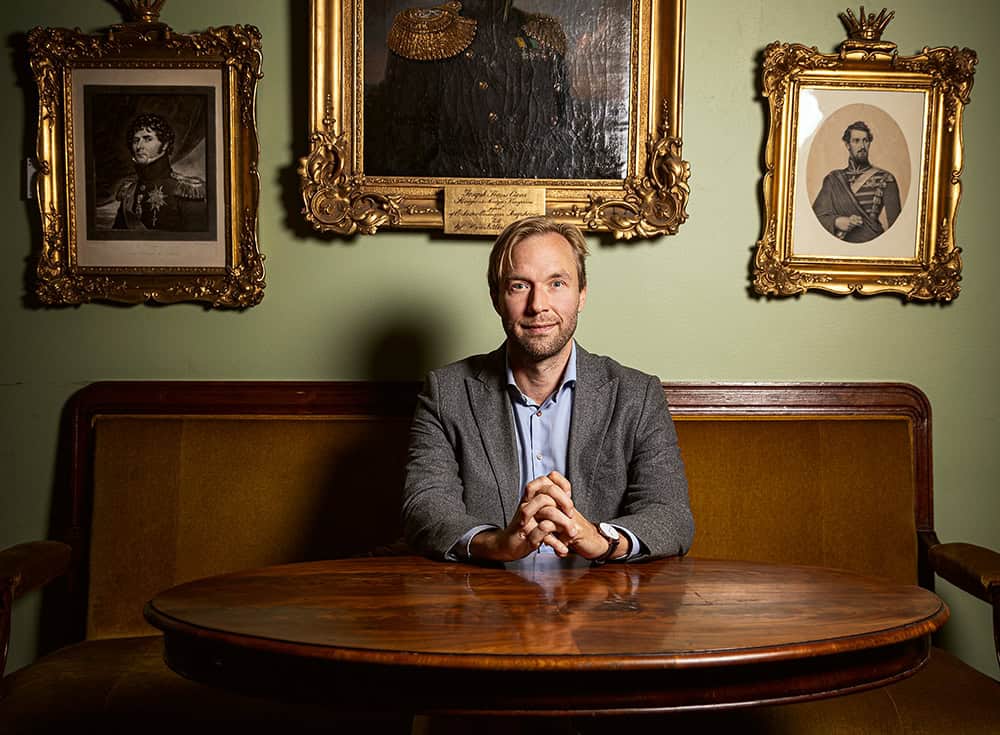In autumn 2023, 14 of 34 vice-chancellors were women. That number has now fallen to 12. Additionally, Hans Adolfsson will succeed Astrid Söderbergh Widding as vice-chancellor at Stockholm University when she leaves on 31 January 2025. He is the the third man to take over from a female vice-chancellor in the past year.
Adolfsson is currently vice-chancellor of Umeå University but is also Chair of the Association of Swedish Higher Education Institutions, SUHF.
“Each higher education institution conducts its own recruitment, and they are completely separate processes,” he says.

Hans Adolfsson
Vice-chancellor, Umeå University
Universitetsläraren’s figures cover 31 state-run universities and colleges, as well as the foundation-run Chalmers, Stockholm School of Economics and Jönköping University. At Jönköping, Måns Svensson replaced Agneta Marell as vice-chancellor in April 2024.
At state sector HE institutions, the board proposes a suitable candidate for the position of vice-chancellor and the government makes the final decision on whether to appoint the person. At privately-run HE institutions, the board appoints the vice-chancellor.
When Jönköping University advertised the position of vice-chancellor, there were 16 qualified applicants. Of these, six were women. The recruitment team was led by Anders Danielsson, Chair of the Board of the Jönköping University Foundation. A number of board members followed the usual recruitment process, including interviews and tests, he says.
“In the end, we chose a man in this case. But we had the gender equality aspect in mind, of course.”

Anders Danielsson
Chair of the Board, Jönköping University Foundation
He says the local union and the collegiate body, the equivalent of a nomination committee at a state sector higher education institution, agreed with the board’s decision.
“So we are confident about the recruitment from that point of view. But then, of course, we should always strive for gender balance.”
Figures from the Swedish Higher Education Authority, UKÄ, show that the proportion of female employees at Jönköping University is 56 per cent. Four of the nine members of the senior management team are women. Danielsson believes that the gender balance at the university is good in general.
“The position of vice-chancellor is currently held by a man, but we had two women before, and next time it might be a man. If it’s one post, it’s either going to be a woman or a man, no matter how you look at it,” he says.
That said, he continues, we should obviously strive for gender equality.
“It’s important that we try to get qualified women to apply for positions and that they are strong candidates. But at the end of the day, it’s all about the factual basis on which decisions are made. This is a constant issue that we need to work with intensively.”
The chair of SUHF, Hans Adolfsson, points out that we need to look at both the whole of academia and the proportion of female vice-chancellors.
“I think it is important that there is gender balance on the management team at each institution. At the national level, at vice-chancellors’ meetings, I can’t see that female or male vice-chancellors are treated differently. But at the same time, better gender balance would of course be desirable there too,” he says.
Sanna Wolk, President of SULF, thinks it is regrettable that the proportion of women at the highest management level in academia is around one third and falling.
“I find it hard to believe, looking at where we are today, that women are less qualified than men. So I think this is about something else,” she says.

Sanna Wolk
President of SULF
She believes that the fact that there are more male vice-chancellors than female sends a signal.
“Above all, it impacts role models. We need to show gender equality, not least given the important societal role of academia. It sends completely the wrong signals to both our students and society at large that we think such gender inequality is okay.”
The third man to succeed a female vice-chancellor in the past year is Per-Henrik Holgersson, who replaced Helena Wessman at the Royal College of Music, KMH, in July this year. Application documents seen by Universitetsläraren show that five women and eleven men applied for the position at KMH.
At Umeå University, Tora Holmberg has been proposed to take over as vice-chancellor after Hans Adolfsson. She is currently a professor at Uppsala University.
The female vice-chancellors
Since the autumn of 2023, seven higher education institutions have appointed new vice-chancellors. The list below shows the 12 current female vice-chancellors.
Malin Broberg, Gothenburg University
Ylva Fältholm, University of Gävle
Susanna Öhman, Halmstad University
Muriel Beser Hugosson, University of Skövde
Annika Östman Wernerson, Karolinska Institutet
Anna Valtonen, Konstfack, University of Arts, Craft and Design
Sanne Kofod Olsen, Royal Institute of Art
Birgitta Bergvall-Kåreborn, Luleå University of Technology
Mia Rönnmar, Malmö University
Ellen Røed, Stockholm University of the Arts
Astrid Söderbergh Widding,* Stockholm University
Maria Knutson Wedel, SLU, Swedish University of Agricultural Sciences
*Leaving at the end of January 2025. Hans Adolfsson will be her successor.



















